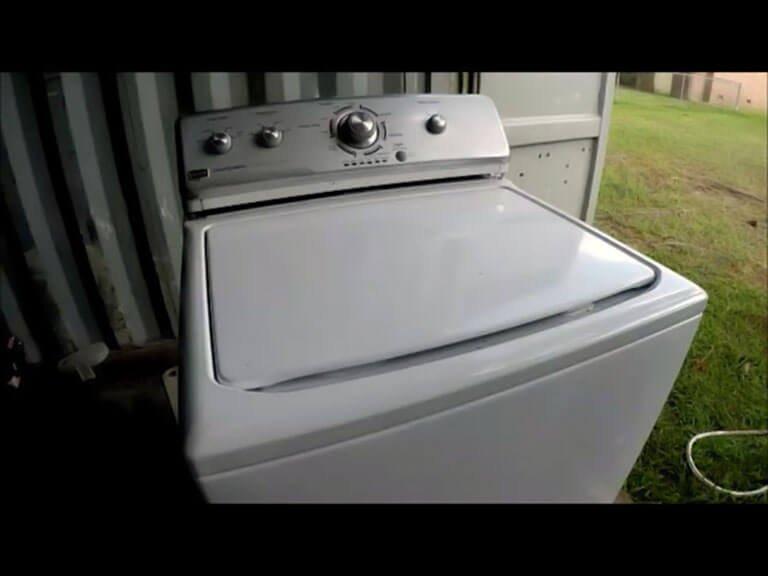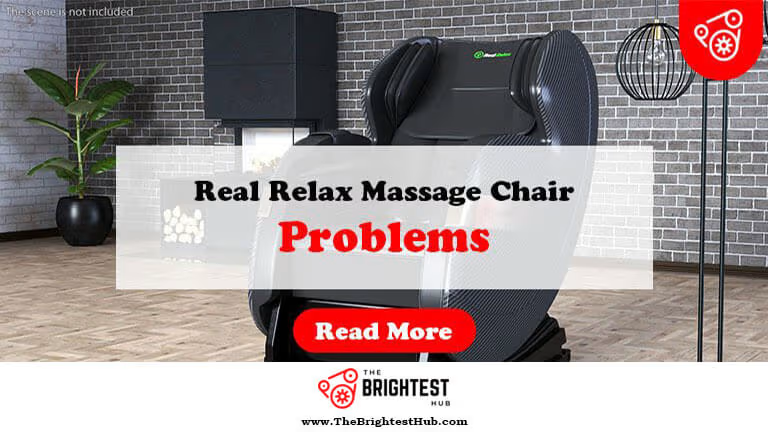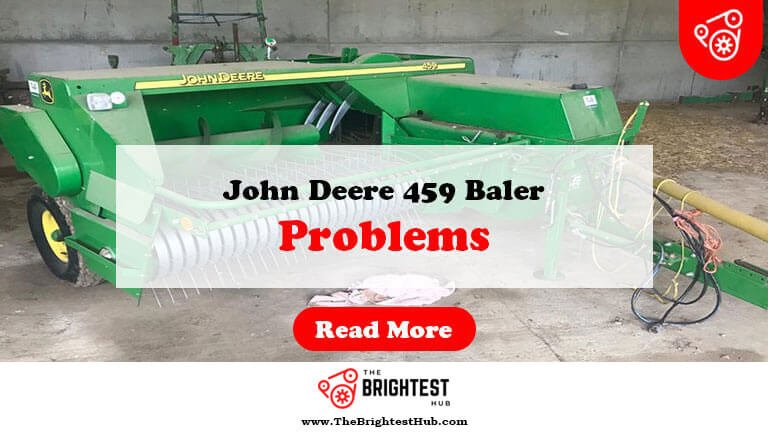Maytag Centennial Washer Problems: Quick Fixes & Tips
Common Maytag Centennial washer problems include issues like unbalanced loads, failure to drain, and error codes. Regular maintenance and troubleshooting can often resolve these issues.
The Maytag Centennial washer is known for its reliability and efficiency. Yet, like any appliance, it can experience problems that may disrupt your laundry routine. Unbalanced loads can cause excessive vibrations, leading to potential damage. Failure to drain often results from clogged hoses or filters, creating water buildup.
Error codes may indicate specific malfunctions, requiring immediate attention. Understanding these common issues helps ensure your washer runs smoothly. Regular maintenance and prompt troubleshooting can extend the life of your appliance. Knowing how to address these challenges can save you time and money, allowing you to enjoy hassle-free laundry days.
Introduction To Maytag Centennial Washer Issues

The Maytag Centennial Washer is popular for its reliability and efficiency. Many users enjoy its features and performance. However, some issues can arise. Understanding these problems can help maintain the washer’s longevity.
Common Concerns With Maytag Centennial Models
Many users report similar problems with their Maytag Centennial Washers. Here are some of the most common concerns:
- Unusual Noises: Grinding or banging sounds can occur during cycles.
- Water Drainage Issues: Washers may not drain properly, causing water to remain.
- Not Spinning: Clothes may come out wet due to ineffective spinning.
- Cycle Problems: Wash cycles may stop unexpectedly or not complete.
- Leaking Water: Some models may develop leaks, damaging floors.
The Importance Of Troubleshooting
Troubleshooting helps identify and fix issues quickly. Here are some steps to follow:
- Check Power Supply: Ensure the washer is plugged in.
- Inspect Hoses: Look for kinks or blockages in hoses.
- Level the Washer: Make sure the washer is on a flat surface.
- Examine Door Lock: Ensure the door locks properly during cycles.
- Review Error Codes: Refer to the manual for specific error codes.
Taking these steps can help prevent larger problems.
Error Codes And Their Meanings
Maytag Centennial Washers can display error codes. These codes help you understand problems. Knowing what the codes mean makes it easier to fix issues.
Deciphering The Flashing Lights
Flashing lights on your washer indicate issues. Each pattern or code has a specific meaning. Pay attention to the lights to troubleshoot effectively.
List Of Frequent Error Codes
| Error Code | Meaning |
|---|---|
| F01 | Control Board Failure |
| F02 | Drain Problem |
| F03 | Water Temperature Issue |
| F04 | Door Lock Failure |
| F05 | Pressure Switch Failure |
Each code helps identify specific issues. Here’s a brief explanation of some common codes:
- F01: Indicates a control board problem. Reset the machine.
- F02: Suggests a drain issue. Check the drain hose.
- F03: Means water temperature is too high or low. Check the water supply.
- F04: Signals a door lock issue. Inspect the door latch.
- F05: Indicates pressure switch failure. Inspect the pressure hose.
Understanding these codes helps you troubleshoot faster. Fixing problems quickly saves time and money.
Drainage Problems
Drainage problems in the Maytag Centennial Washer can disrupt laundry days. Understanding signs and solutions helps maintain your washer’s performance.
Signs Of Drainage Issues
- Water pooling: Puddles form at the bottom of the washer.
- Slow draining: Water takes too long to exit the drum.
- Unpleasant odor: Stagnant water creates foul smells.
- Error codes: Display shows codes like
LDorOE. - Wet clothes: Clothes remain soaked after the cycle ends.
Simple Cleaning Steps
- Check the drain hose: Ensure it’s not kinked or clogged.
- Clean the filter: Remove debris from the drain filter.
- Inspect the pump: Look for blockages in the pump.
- Run a cleaning cycle: Use a washer cleaner for deep cleaning.
- Test the drain: Run a short cycle to see if draining improves.
Spin Cycle Setbacks
The spin cycle is crucial for drying clothes. Problems during this stage can lead to damp laundry. Understanding common setbacks helps you fix them quickly.
Unbalanced Loads And Solutions
Unbalanced loads can stop the spin cycle. Here are some common signs of an unbalanced load:
- Loud banging noises
- Washer shakes excessively
- Clothes are still wet after spin
To fix unbalanced loads:
- Redistribute clothes evenly in the drum.
- Avoid washing heavy items with lighter ones.
- Use a smaller load for bulky items.
Check for foreign objects. Small items can cause imbalance too.
Resetting The Spin Cycle Feature
Sometimes, resetting the spin cycle feature can solve issues. Follow these steps:
- Unplug the washer from the power source.
- Wait for at least 30 seconds.
- Plug it back in.
- Turn the washer on.
- Set it to a spin cycle.
This reset often clears errors and allows normal operation. Regular maintenance keeps your washer running well.
Water Filling Woes
Water filling issues can disrupt your laundry routine. These problems can cause frustration and delays. Understanding the causes and solutions helps you get back on track.
Troubleshooting Water Inlet Problems
Water inlet problems can stem from several issues. Here are common causes and solutions:
- Clogged filters: Check the inlet screens. Clean any debris.
- Faulty water inlet valve: Test the valve for continuity. Replace if faulty.
- Incorrect settings: Ensure the washer settings match your load type.
Follow these steps to troubleshoot:
- Turn off the power to the washer.
- Inspect the hoses for kinks or damage.
- Remove and clean the inlet filters.
- Check the valve with a multimeter.
Document any findings. This information is helpful for repairs.
When To Check Water Pressure
Low water pressure affects the washer’s performance. Check your home’s water pressure if:
- The washer fills slowly.
- There is a loud noise during filling.
- Other appliances also experience low pressure.
To check water pressure:
- Turn off the washer.
- Attach a pressure gauge to an outdoor faucet.
- Turn on the faucet and read the gauge.
Normal water pressure ranges from 40 to 60 psi. Contact a plumber if pressure is low. This will ensure the washer operates properly.
Agitation And Tumbling Troubles
Maytag Centennial Washers are reliable, but problems can arise. One common issue involves agitation and tumbling. These problems can disrupt your laundry routine. Understanding these issues can help you troubleshoot effectively.
Diagnosing Agitation Malfunctions
Agitation issues can cause clothes to remain dirty. They can lead to improper washing cycles. Here are some common signs of agitation problems:
- Clothes are still dirty after a wash.
- Washer makes unusual noises during the cycle.
- Drum does not move at all.
To diagnose these issues:
- Check the power supply to the washer.
- Inspect the lid switch. A faulty switch can prevent agitation.
- Examine the drive belt for wear or damage.
- Look at the motor coupling for signs of breakage.
- Test the transmission for proper operation.
Use a multimeter to check electrical components. This will help identify faults quickly.
Tips For Smooth Tumbling
Tumbling issues can lead to unevenly washed clothes. Here are some tips to ensure smooth tumbling:
- Do not overload the washer. Follow the recommended load size.
- Balance the load. Place heavier items evenly in the drum.
- Regularly clean the drum to prevent buildup.
- Check the shock absorbers. Worn ones can affect tumbling.
- Inspect the drum bearings for wear.
These simple steps can help avoid tumbling issues. Regular maintenance ensures a longer washer lifespan.
Noise And Vibration Issues
Maytag Centennial Washers can experience noise and vibration problems. These issues often disrupt laundry routines. Understanding the causes helps in finding solutions.
Identifying Unusual Sounds
Unusual sounds can signal a problem with your washer. Here are common noises to listen for:
- Thumping: Indicates unbalanced loads.
- Grinding: May mean worn-out bearings.
- Clanking: Usually from loose items inside the drum.
- Humming: Could be an issue with the motor.
Check for these sounds during operation. Identifying them early can prevent bigger issues.
Reducing Washer Vibrations
Excessive vibrations can damage your washer. Here are steps to reduce vibrations:
- Ensure the washer is level on the floor.
- Use vibration pads under the feet.
- Load clothes evenly in the drum.
- Do not overload the washer.
Follow these tips to minimize noise and vibrations. A well-maintained washer runs smoothly.
Maintenance Tips For Longevity
Keeping your Maytag Centennial Washer running well is easy. Simple maintenance can extend its life. Follow these tips for a reliable laundry experience.
Regular Cleaning Routines
Cleaning your washer regularly helps prevent buildup. Here are some easy steps:
- Wipe down the drum after each use. This removes moisture.
- Clean the detergent dispenser every month. Use warm water and a cloth.
- Run a cleaning cycle once a month. Use a washer cleaner or vinegar.
- Check the door seals for dirt and debris. Wipe them clean to avoid mold.
When To Replace Parts
Knowing when to replace parts can save money. Watch for these signs:
| Part | Signs of Replacement |
|---|---|
| Agitator | Not spinning or moving clothes correctly. |
| Drain Pump | Water not draining after cycles. |
| Hoses | Visible cracks or leaks. |
| Belts | Fraying or unusual noises during operation. |
Replace parts as soon as you notice issues. This keeps your washer in top shape.
Professional Repair Vs. Diy
Choosing between professional repair and DIY for your Maytag Centennial Washer is crucial. Each option has pros and cons. Understanding these will help you make the right choice.
Assessing Repair Complexity
Start by assessing the complexity of the issue. Some problems are simple and can be fixed at home. Others may require expert help.
- Common DIY fixes:
- Clogged hoses
- Unbalanced loads
- Faulty lid switch
- Complex issues:
- Motor problems
- Control board issues
- Water pump failures
If the problem seems complex, consider hiring a professional. A small mistake can lead to larger issues.
How To Find A Qualified Technician
Finding a qualified technician is essential for repairs. Follow these steps to ensure you hire the right person:
- Check reviews online.
- Ask friends or family for recommendations.
- Verify their certifications and experience.
- Request quotes from multiple technicians.
- Inquire about warranties on repairs.
Keep these factors in mind:
| Factor | Importance |
|---|---|
| Experience | High |
| Certifications | High |
| Customer Reviews | Medium |
| Pricing | Medium |
Choosing the right technician leads to better outcomes. Make sure to ask questions to feel confident.
Frequently Asked Questions
What Are Common Maytag Centennial Washer Problems?
Common issues include spinning problems, water not draining, and error codes appearing on the display.
How To Reset A Maytag Centennial Washer?
To reset, unplug the washer for a minute, then plug it back in and select a cycle.
Why Won’t My Maytag Washer Drain?
A blocked drain hose or pump can prevent draining. Check for clogs and ensure proper connections.
What Does Error Code F7 Mean?
Error code F7 indicates a problem with the motor control. It may require professional service to fix.
How To Troubleshoot Maytag Washer Not Spinning?
Check the load balance, lid switch, and drain issues. These are common causes for spinning failures.
Conclusion
Addressing Maytag Centennial washer problems can save you time and money. Regular maintenance is key to preventing issues. If you encounter difficulties, troubleshooting steps can often resolve them. Always consult your user manual for specific guidance. With the right care, your washer can provide reliable performance for years to come.






